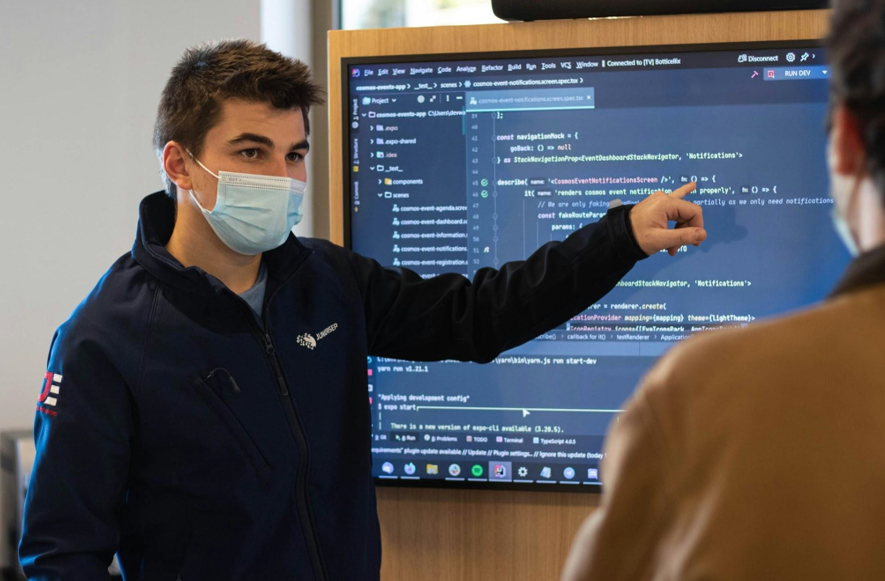In the dynamic realm of education and training, the ability to effectively teach and accurately assess learners’ understanding is both a skill and an art. This article aims to serve as a comprehensive guide for aspiring trainers, educators, and anyone interested in honing their teaching methodologies. It will explore innovative tactics for engaging learners, fostering a conducive learning environment, and utilizing assessment tools to measure educational outcomes. Whether you’re a seasoned professional seeking to refine your approach or a newcomer eager to make a significant impact, the insights provided will equip you with the knowledge and strategies needed to excel in the art of teaching and assessing.
Continuous Professional Development
For educators and trainers, the learning never stops. Engaging in continuous professional development (CPD) plays a vital role in staying informed about the latest educational trends, technologies, and pedagogical strategies. Participating in workshops, conferences, and online courses can enrich trainers’ expertise and teaching methods.
Peer learning communities within educational institutions or online platforms offer valuable opportunities for exchanging ideas, challenges, and best practices among educators. Such communities foster a culture of continuous learning and improvement, empowering educators to adopt innovative teaching strategies and effectively address the evolving needs of learners. Whether it’s a cert 4 training and assessment program or a specialized course on instructional design, investing in CPD can greatly enhance a trainer’s skills and knowledge, ultimately benefiting the learners. It also demonstrates a commitment to professional growth and sets an example for learners to embrace lifelong learning.
Engaging Learners in the Digital Age
In an era where digital technology permeates every aspect of our lives, incorporating tech tools in education can significantly heighten engagement and facilitate learning. From interactive whiteboards to e-learning platforms, these tools not only make learning materials more accessible but also more engaging for students. They cater to various learning styles and preferences, ensuring that every learner finds something that resonates with them.
Utilizing social media and gamification strategies has also proven to be highly effective in engaging learners. Platforms like Twitter and Instagram can be used to create educational content, facilitate discussions, and share resources. Gamification, the application of game-design elements in non-game contexts, makes learning fun and encourages a competitive spirit amongst learners. Both strategies have been shown to enhance learner engagement and motivation.
Crafting a Conducive Learning Environment
The physical and psychological environment in which learning takes place can significantly impact the effectiveness of the educational process. Physically, a well-organized, comfortable, and resource-rich environment can foster a sense of belonging and encourage active participation. Adequate lighting, ergonomic furniture, and access to learning materials are essential components of such an environment.
Psychologically, creating a safe space where learners feel valued and respected is crucial. This includes establishing clear expectations, promoting inclusivity, and encouraging open communication. A positive learning environment not only supports academic achievement but also contributes to learners’ emotional and social development.
Innovative Assessment Approaches
Traditional exams and quizzes are no longer the sole means of assessing learners’ understanding and skills. Portfolio assessments, for instance, allow learners to compile a body of work over time, showcasing their progress, strengths, and areas for improvement. This type of assessment encourages reflective practice and continual learning.
Peer assessment is another innovative approach that enables learners to evaluate each other’s work. This method fosters critical thinking, self-reflection, and collaboration among learners. It also provides learners with different perspectives on their work, enhancing their learning experience and understanding of the subject matter.
Leveraging Technology for Enhanced Learning
Leveraging technology in the classroom goes beyond mere digitization of teaching materials; it’s about creating interactive and personalized learning experiences. Tools like augmented reality (AR), virtual reality (VR), and artificial intelligence (AI) can transform mundane topics into exciting adventures. For instance, AR can bring historical events to life, allowing students to ‘experience’ history rather than just reading about it.
Adaptive learning technologies powered by AI can tailor education to fit the needs of individual learners, adjusting the difficulty level of tasks based on the learner’s performance. This personalized approach ensures that all students, regardless of their proficiency level, remain engaged and challenged, facilitating a more efficient and effective learning process.
Incorporating Soft Skills Training
Soft skills, such as communication, teamwork, and problem-solving, are increasingly recognized as crucial for success in the 21st-century workplace. However, these skills are often overlooked in traditional educational setups. Incorporating soft skills training into the curriculum can prepare learners for real-world challenges, fostering a holistic educational experience. Interactive role-playing, group projects, and peer feedback sessions can be highly effective in developing these skills, providing learners with practical experience in a safe and structured environment.
Besides, educators can model these soft skills through their teaching methods, creating a learning environment that promotes empathy, communication, and collaboration. By prioritizing soft skills alongside academic achievement, educators can equip learners with the comprehensive skill set needed to thrive in both personal and professional spheres. This approach also prepares learners for a rapidly changing job market, where soft skills are increasingly valued by employers. It further emphasizes the role of educators as not just teachers, but also mentors and role models for their students.
Evaluating and Adapting Teaching Strategies
The landscape of education is continually evolving, making it vital for educators and trainers to regularly evaluate and adapt their teaching strategies. Reflection plays a crucial role in this process, enabling educators to assess what works well and what can be improved. Tools such as student feedback forms, teaching journals, and peer observations can provide valuable insights into the effectiveness of teaching methods and areas for enhancement.
Staying informed about the latest educational research and innovations can inspire new instructional strategies. Experimenting with different teaching approaches and technologies can lead to more engaging and effective learning experiences. Ultimately, a willingness to adapt and innovate is key to maintaining relevance and effectiveness in the field of education and training. It’s a continuous process that requires dedication, reflection, and a growth mindset.
Mastering the art of teaching and assessing requires a combination of continuous learning, innovative approaches, creating conducive environments, leveraging technology, and incorporating soft skills training. By adopting these strategies and continuously evaluating and adapting them, aspiring trainers can excel in their roles and make a significant impact on learners’ growth and development. So keep exploring, experimenting, and evolving to become a master in the art of education. With dedication and passion, you can inspire and shape the minds of the future.




